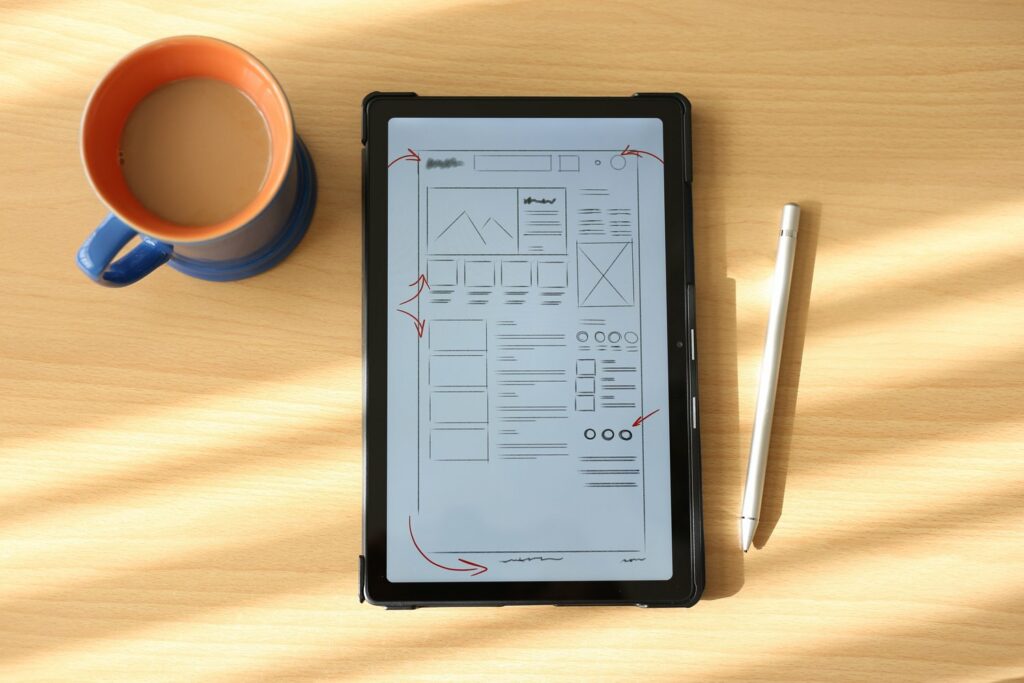The adoption of Artificial intelligence (AI) within the IT space has increased over the past couple of years. It has already begun changing how we live, plan our days and travel, and even how we fight crime. AI helps to automate processes, improve efficiency, reduce costs and utilise it to improve the user experience. What are the intersections of AI and UI?
Intersections between AI and User Experience
Artificial Intelligence and UX designers are similar in many ways–both gather data, analyse user interactions, and predict human behaviour and can be used to improve the delivery of services and user experiences. Chatbots, self-driving cars, Google translate and Siri are examples of how AI has been utilise to improve user experience. AI can potentially make UX design much easier and more efficient. When harnessed properly it can help to create better end-user experiences, and lower the barriers to entry for tasks. However, AI are not without limitations–the technology is still maturing, and people are only discovering ways to utilise it.
Ways AI has improved User Experience
1. Personalised User Experience
AI helps to identify user behavior and expectations. Over time, is able to detect behavioral patterns, which will help provide customised recommendations and content to users. A prime example is how users receive video suggestions on YouTube based viewing behaviours. With AI, users are able to receive more useful content while helping companies track user interactions on a website.
Google and Facebook have been using AI for targeted advertising for years. Users are used to seeing ads related to recent searches or other online activity. AI can personalise user experience based on where they’re located, what device they’re using and how they got there
2. 24/7 Uninterrupted Work
With technological advancements, AI will become cheaper and more productive. With AI, it is possible to offer 24/7 assistance to customers and even ensure the employees do not have to work extra shifts

Photo by Pradamas Gifarry on Unsplash
3. AI Integrated Customer Support
AI will try to solve your issue first, if they are not able to they can forward it to technical support call. Such a system helps to manage high traffic of customer queries.
Chatbots go beyond simply holding a customer’s place in line until someone speaks to them. Companies are using chatbots for everything from insurance claims and restaurant bookings to virtual stylists and therapists. This has allowed companies to engage their users at any time of day, anywhere in the world.
4. Increase Accessibility
Without a doubt, accessibility is one of the criteria of a good user interface. AI can simplify the difficult task of making sites user-friendly for anyone, regardless of their unique abilities. For example, Uber has used AI to make its app more useful for those who have difficulty hearing.
5. Automation
With the automation capabilities of AI, time-consuming and mundane tasks that require human attention for successful completion can be replaced. Some examples of such tasks that AI can automate include resizing images, making colour corrections, and cropping images. For example, Adobe’s stitch capability can identify patterns in images and help designers stitch them together.
With automation, the marketer’s job is made easier. Take email newsletters for instance–email marketing software can automate the process of finding the best time to send emails. After analysing the data of a company’s newsletters, it can provide insights on when newsletters were opened and automatically suggest the best send time. Aside from that, it is also possible to set your emails to be sent to specific demographics. There are endless ways to adapt campaigns to dial in the right UX by tapping on AI.
How Artificial Intelligence Can Help UX Designers
AI is a tool to be harnessed to reduce the need for human attention. Besides the direct application of AI to improve user experiences, AI can also power UX processes to improve the UX design process that leads to improved user experiences.
1. Making Decisions
AI can be used to provide UX designers with choices to help them quickly make design decisions. Since predictions are based on historical datasets, the offer of the fewest potential choices can make the decision-making process easy and fast

Photo by Carlos Muza on Unsplash
2. Analysing Data Efficiently
AI’s edge comes from being able to analyse large amounts of data to ascertain patterns and deliver meaningful UX research results. For example, AI could generate questionnaires to collect data from users, and use that data for qualitative data analysis. Further, AI can also provide relevant responses to users who need to carry out qualitative data analyses. In that regard, AI provides tremendous help in the process of designing and executing UX interviews.
AI is also extremely useful when collecting a small segment of the data you might want to capture when someone lands on your site:
- User’s geographic location
- Referral source
- Device used
- Total session time
- Pages visited
- User clicks and interactions
- Products viewed

Photo by Sahand Babali on Unsplash
3. Wireframing
Even with very little data, AI can develop wireframes from a flowchart. Once an artificial intelligence understands the context and the flow, it can easily generate complete wireframes for an entire application. The UX designer will only need to customise or edit the wireframes to meet specific product requirements. This can speed up processes of UX design.
4. A/B Testing
AI can generate options in a UX design solution in preparation for A/B testing, then determine which solution performs best.
Conclusion: Implications of AI in the field of UI/UX design
There are tremendous benefits to using AI, when it comes to improving user experience and also in improving the UX design process. It can affect the way people understand UI/UX fundamentals and rethink UX for business. However, with AI’s advancements, designers will need to become more collaborative and focused on user research and insights. As of now, designers are often required to help AI be successful in the design process by giving AI feedback when it makes mistakes or guiding it when it is unable to figure something out.
However, when AI begin to understand how humans think, there will not be a need for designers to work with them anymore. That is when designers will need to focus their efforts on user research and insights instead of design execution. AI and UX design hold tremendous potential, and it is the responsibility of businesses and product developers to make optimal use of AI to produce better products and user experiences.
